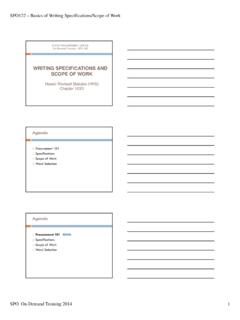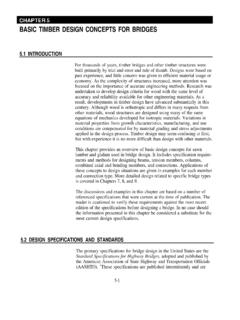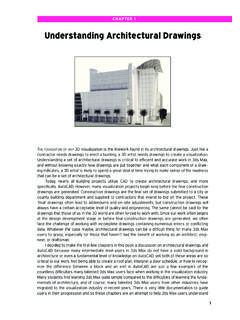Transcription of UNDERSTANDING YOUR CONSTRUCTION …
1 1 UNDERSTANDING your CONSTRUCTION contract [what you don=t know can and will be used against you]. Law Offices of Crawford & Bangs I. INTRODUCTION This article will review several key contract clauses used in CONSTRUCTION contracts. These clauses are the most frequently litigated. Consequently, it is imperative that you understand the effects of these clauses before entering into any contract . The essential elements of any contract are 1) identity of the parties; 2) description of the work; 3) time of performance; 4) contract price; and 5) payment. Each of these elements should be clearly identified and spelled out in the contract . Otherwise, you are at risk of having these terms determined by a disinterested and uninvolved party sometime in the future with potential disastrous results.
2 II. KEY CLAUSES IN THE CONTRACTUAL RELATIONSHIP A. NO DAMAGE FOR DELAY CLAUSE One of the great Arisk allocators@ in the CONSTRUCTION industry is the no damage for delay clause. The contractor in bidding the project must carefully examine the contract documents to determine whether or not there is in fact a no damage for delay clause contained therein. If there is one, the contractor must bid the contract with knowledge that such a clause exists and it will have the burden of proof to get around the no damage for delay clause. Customarily, this provision provides that while the contractor or subcontractor is not entitled to a claim for delay damages, it will be entitled to an extension of time.
3 Many times the contract will provide that the contractor is entitled to no damage for delay, but, on the other hand, the owner or contractor is entitled to liquidated damages for any delay caused by the contractor or subcontractor. 2 Public contract Code Section 7102 states: AContract provisions in CONSTRUCTION contracts of public agencies and subcontractors thereunder which limit the contractee=s liability to an extension of time for delay for which the contractee is responsible and which delay is unreasonable under the circumstances involved, and not within the contemplation of the parties, shall not be construed to preclude the recovery of damages by the contractor or subcontractor.
4 This section shall not be construed to void any provision in a CONSTRUCTION contract which requires notice of delays and provides for arbitration for other procedures for settlement or provides for liquidated damages.@ Thus, in public works contracts, a no damage for delay clause will not be enforced if the contractor can show that the delay was unreasonable under the circumstances involved and not within the contemplation of the parties. The no damage for delay clause is one of the most hotly contested clauses in the CONSTRUCTION industry. In some cases, the clause is enforced and in others, it is not. It really depends on the factual circumstances under which the issues arise.
5 In determining whether or not a no damage for delay clause will be enforced, the court has held that the following factors need to be considered: 1) the terms of the particular provision; 2) the nature of the default; 3) various other circumstances of the particular case. The general rule that has arisen around the United States with regard to the no damage for delay clause is that the clause will be enforced unless: 1) the delay was so long in duration or was of such a nature that it can be said that it was not within the contemplation of the parties when the contract was entered into; 2) the delay was the result of the owner=s act of interference with the contractor; 3) the delay was caused by an act of bad faith by the owner; 3 !
6 In one case where the court concluded that even though the owner actively interfered with a contractor=s activities there was no deliberate intent to delay and therefore the court upheld the no damage for delay clause. ! In another case the court found that the risk was agreed to by the contractor when he accepted the contract and upheld the no damage for delay clause. ! In another case the court found that a two-year delay was not uncommon in highway CONSTRUCTION and upheld the no damage for delay clause. B. MUTUAL WAIVER OF CONSEQUENTIAL DAMAGES The 1997 AIA 201 General Conditions has added a provision for mutual waiver of consequential damages at Section which states: AClaims for Consequential Damages.
7 The contractor and owner waive all claims against each other for all consequential damages arising out of or relating to the contract . This mutual waiver includes: 1) damages incurred by the owner for rental expenses for loss of use, income, profit, financing, business and reputation, and for loss of management or employee productivity or of the services of such persons; and 2) damages incurred by the contractor for principal office expenses including the compensation of personnel stationed there, for losses of financing, business and reputation, and for loss of profit other than anticipated profits arising directly from the work. This mutual waiver is applicable, without limitation, to all consequential damages due to either party=s termination and deemed not to preclude an award of liquidated direct damages, when applicable, in accordance with the requirements of the contract documents.
8 C. LIQUIDATED DAMAGES 4 Under California law, liquidated damage clauses are presumptively valid. (See Civil Code Section 1671 and Public contract Code Section 10226.) Essentially, the party seeking to invalidate a liquidated damage clause must demonstrate A.. that the provision was unreasonable under the circumstances existing at the time the contract was made.@ Another frequently litigated issue concerning liquidated damage clauses concerns the situation where an owner assesses liquidated damages when it is partly at fault for the delay in the project completion date. Under California law, if the facts demonstrate that the period of delay was concurrently caused by the owner and contractor, courts will not enforce the liquidated damage assessment.
9 On the other hand, if the contractor and owner each caused separate delays, the courts will apportion the delay attributable to the contractor and partly enforce the liquidated damage clause. D. CONTRACTORS REVIEW OF DOCUMENTS In general, owners are responsible to contractors for errors and omissions in the CONSTRUCTION plans and specifications. As a result, owners frequently seek to insert exculpatory clauses in contracts shifting the risk of defects in the plans and specifications onto contractors. In general, the exculpatory clause to be enforceable must be sufficiently specific so as to put the contractor on notice that he or she should not under any circumstances rely on the accuracy of the plans and specifications to prepare an estimate for the cost of the work to be performed.
10 Many contracts provide that the contractor must inform the owner and seek correction of or clarification of any document deficiencies such as errors, omissions or inconsistencies and to do so prior to proceeding with the work. In the event that the contractor then proceeds recognizing such error, inconsistency or omission and fails to report it to the owner or architect, the contractor will then be responsible should the installation prove defective. Contractors and subcontractors should be aware of contract provisions that in essence attempt to make them Aguarantors@ of the plans. The following are some examples of attempts on the part of the owner to shift the responsibility for errors and 5 omissions to the contractor.



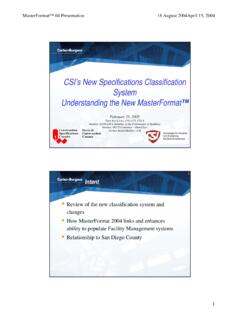
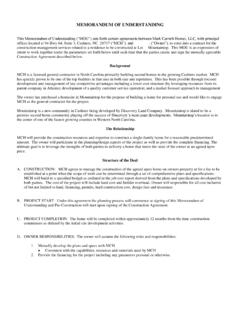
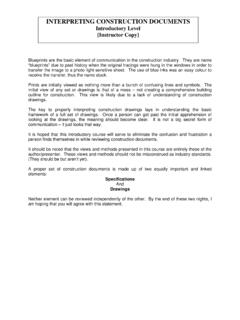
![Welcome [www.fefpa.org]](/cache/preview/0/a/5/c/1/8/d/8/thumb-0a5c18d86c60b70ba93ed11342457031.jpg)

